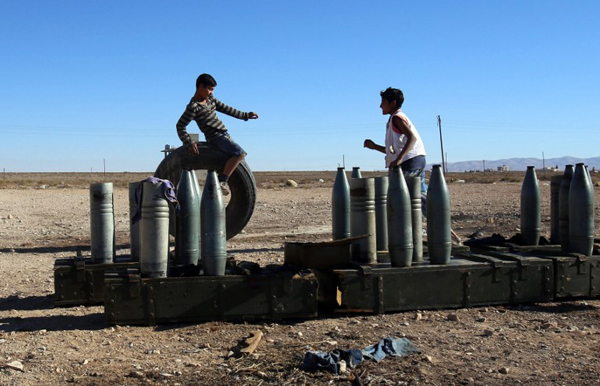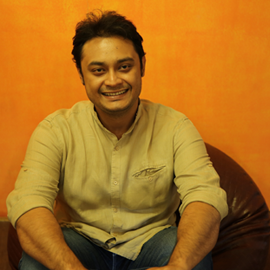The US spends $615,482 an hour to fight ISIS: terror in shock figures

The devastating attacks in Paris recently have clearly fulfilled the objectives of the Islamic State, or the IS. The West is panicked by threats of imminent attacks. They have escalated airstrikes against IS strongholds, in the process killing civilians and giving the terrorist group a recruiting tool.
The IS is a political and military quagmire, and it's getting worse by the day. But how did it all start? What is the situation now? Who are the stakeholders?

Photo: Youssef Karwashan/AFP
We try to answer these questions, through facts and numbers.
- Estimated strength of the IS army, according to Fuad Hussein, the chief of staff to Kurdish President Massoud Barzani.
Ironically, the same number of people from across the world have applied to live on Mars, an unlivable planet.
The IS army is 7-8 times larger than the Western intelligence agencies estimates of 20,000-30,000.
Frontline forces and suicide squad members number 15,000. The IS is said to pay its fighters $400 a month, quite lucrative in a region with minimal jobs.
These estimates are from 2014. So, it can be safely assumed that the group's strength is probably higher now.
- Estimated number of foreigners fighting for the IS as of December 2014. They come from 90 countries.
In absolute numbers, the pack is led by fighters from Russia, Saudi Arabia, Morocco, France and Turkey. But on a per million basis, Tunisia, Jordan and Belgium lead.
According to an analysis by GlobalSecurity.org, it is a deadly concoction of socio-cultural marginality and rejection of modernity that drives the fighters. They strive for recognition, which the global Salafist movement takes advantage of.
- According to Indian intelligence agencies, 23 people from this country are fighting for the IS, another six have died and one has come back. Reportedly, they are considered inferior to the Arab fighters by the IS and paid less.
- Area in Syria and Iraq that IS is ruling over.
The size of the IS caliphate is nearly as much as the Great Britain.
This region is inhabited by 6-7 million people, nearly equal to the population of Pune.
Life is far from being pleasant. While foreigners get free housing and medical care, civilians have electricity for only an hour or two, food prices have tripled since the IS took control, schools are closed and there are no jobs.
"Life under Daesh is a nightmare each day. We have an unknown future. Maybe Daesh will kill us or maybe we will die in the war, or maybe after. What we are going through right now is a slow death," a woman maths teacher from Mosul told the media.
- Estimated earnings of the IS in 2014, according to conservative estimates of the US Treasury.
This is more than what football stars Lionel Messi and Robin Van Persie earn together.
The main sources of IS earnings are robbery and extortion, oil sale, ransom payments and donations.
The US treasury, in a February 2015 press release, had outlined a four-step solution to curb IS funding - prevent access to international finance system, airstrikes on its oilfields, no concessions policy on ransoms, stop donations.
Stopping the cash flow is a big challenge, however. According to Russian president Vladimir Putin, IS money comes "unofficially" from 40 countries, including some of the G20 nations.
- The number of IS fighters allegedly killed in US airstrikes as of June 2015, according to US Deputy Secretary of State Antony Blinken.
"IS continues to hold Mosul, Ramadi and many other places despite our hopes that some of those conquests could have been reversed right now," says Micheal O' Hanlon, military analyst at the Brookings Institution.
Airstrikes against IS may not have yielded desired results. Though the US regularly IS casualty figures, the group's estimated strength seems to have remained nearly constant.
If the US casualty count is right, then, as LongWarJournal Senior Editor Thomas Joscelyn puts it, "IS fighters were drastically underestimated in the initial assessments".
US soldiers have faced allegations in the past, particularly during the Vietnam war, of inflating enemy casualty numbers for promotions.
- The cost of military action by the US against IS since August 2014.
This is about the net worth of Donald Trump, the business magnate and investor who is running for US president in 2016. He has recently been in the news for his /p>
Armed with such enormous financial resources and aided by France and a few Arab countries, the US has carried out about 8,000 airstrikes on Syria and Iraq.
- US taxpayers are paying $615,482 per hour to fund the war against IS.
- The area IS has lost control over since US-led airstrikes began in August 2014, according to an estimate by William McCants, a Middle East analyst at the Brookings.
Simultaneously, about 100 suspected IS attacks were thwarted by authorities worldwide last year.
Russia, which recently joined the war against the IS, has been more proactive than the West when it comes to airstrikes. In the last five days, for example, its warplanes have destroyed 1,000 oil tankers and about 472 other targets.
- "We will search wherever they may be hiding. We will find them anywhere on the planet and punish them," Putin said in October after a Russian airliner crashed in Egypt, allegedly bombed by the IS.
- The average estimate of the civilian fatalities of airstrikes in Syria and Iraq, according to analyses by various global human rights organisations.
In early February 2015, coalition forces claimed "two airstrikes struck multiple IS oil pump jacks and destroyed four IS mobile drilling rigs" near Al-Hasakah, Syria.
They didn't mention that the strike also killed Ibrahim al-Mussul, a shepherd in his late 60s, and his two daughters aged 27 and 25.
"Their bodies were shredded. We found Ibrahim's hand next to the house, and we were still collecting bits of flesh and body parts into the early hours of the next morning," an investigation by a Syria based human rights group recounted.
The Russians, meanwhile, have bombed at least four hospitals since September, killing dozens of innocent people, including medical staff.
- Latest ground reports by activists also suggest that white phosphorous is being used in airstrikes in Raqqa in blatant violation of international law. The chemical sets everything it touches on fire.
- Number of refugees from Syria who have registered or are awaiting registration with the UN High Commissioner for Refugees.
This is equivalent to about half of Israel seeking asylum.
The Syrian conflict is the world's biggest humanitarian crisis since the World War II. But after the Paris attacks, Europe has been iffy in accepting refugees, fearing IS infiltrators among them.
- "People are fleeing bombs, they don't care who is dropping them," Chris Woods, an investigative journalist, told the Intercept.
The number of stages in the genesis and growth of the IS.
2004-06: Al-Qaeda in Iraq is established by Abu Musab al-Zarqawi and wages war against the US-led forces as well as the Shia population. Zarqawi was eventually killed in an American strike in June 2006.
2006-11: Islamic State in Iraq, or ISI, is established as a network head of Jihadi groups fighting coalition forces. The movement fails to muster strength as the US manages to pacify the restive Sunni population.
2012-14: After the US withdraws, ISI gets stronger as Sunnis frustrated with the corrupt Shia-dominated Iraqi regime join the group. Concurrently, the Syrian civil war creates a political vacuum and the ISI fills it with Al-Nusra. The two groups have a falling out, however, prompting ISI to rebrand itself as the Islamic State of Iraq and the Levant, or ISIL. The name ISIL is later changed to IS.
Post June 2014: On the back of unprecedented war victories, IS captures Mosul, Iraq. Raqqa in Syria falls to the group while Bashar al-Assad is busy fighting Al-Nusra. IS leader Abu Bakr al-Baghdadi declares an Islamic caliphate.
It is alleged, however, that the US is equally responsible for giving birth to the IS. Significantly, al-Baghdadi was once a "respected" prisoner at the Bucca Camp in Iraqi, which housed more than 100,000 jihadis. He was arrested in February 2004 and released in December as a "low level" prisoner.







![BJP's Kapil Mishra recreates Shankar Mahadevan’s ‘Breathless’ song to highlight Delhi pollution [WATCH] BJP's Kapil Mishra recreates Shankar Mahadevan’s ‘Breathless’ song to highlight Delhi pollution [WATCH]](https://images.catchnews.com/upload/2022/11/03/kapil-mishra_240884_300x172.png)

![Anupam Kher shares pictures of his toned body on 67th birthday [MUST SEE] Anupam Kher shares pictures of his toned body on 67th birthday [MUST SEE]](https://images.catchnews.com/upload/2022/03/07/Anupam_kher_231145_300x172.jpg)






